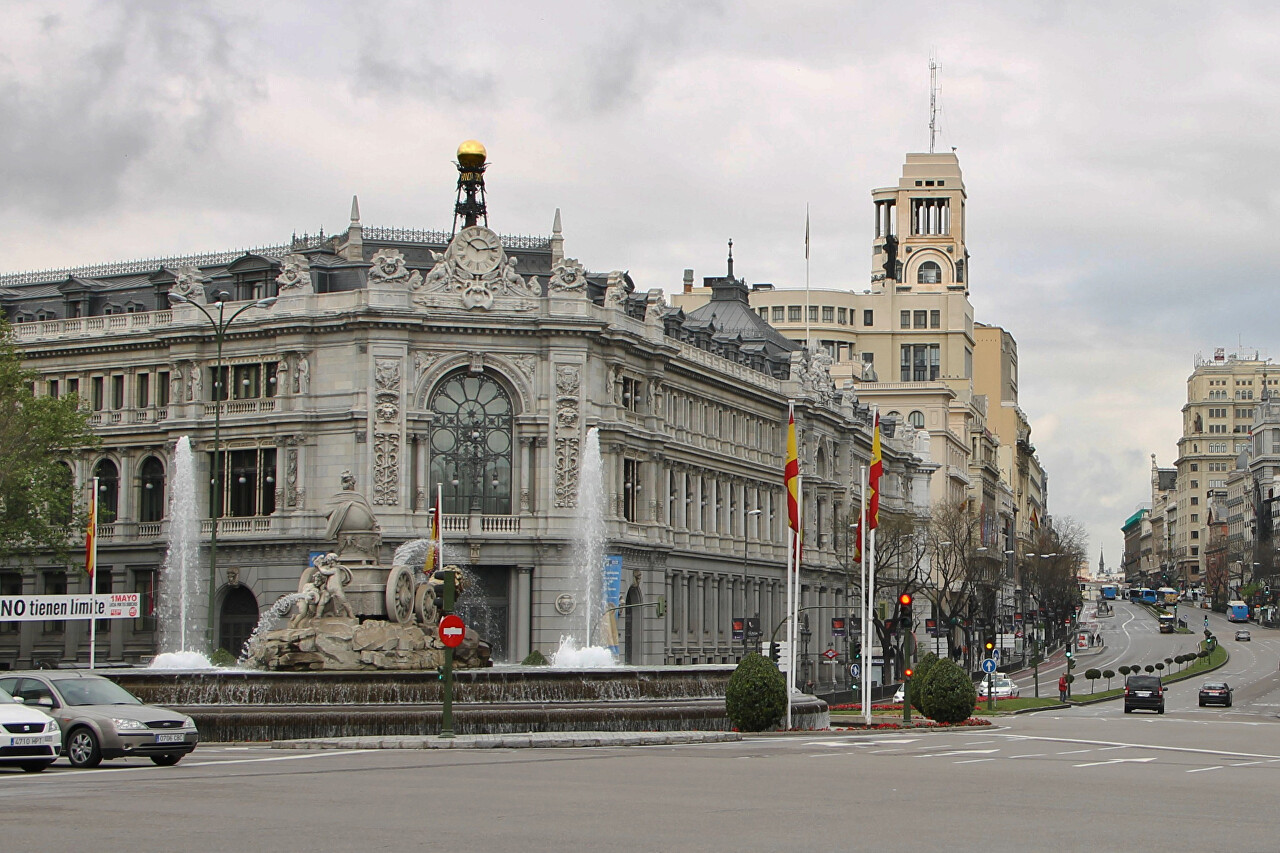Banco de España, Madrid
The main financial institution of Spain (Banco de España) was founded by King Carlos III and was named after the monarch Banco Nacional de San Carlos, the director was invited financier of French origin Francisco Cabarrús (Francisco Cabarrús). In the mid-19th century, the bank opened branches in Alicante and Valencia and received its real name. In 1874, the Spanish government transferred control of the bank's cash issue. In 1936, the Republican government effectively squandered the bank's gold reserves by purchasing weapons and supplies to fight General Franco's rebels. At the same time, 174 tons went to France, and 510 tons were exported to the USSR. And if after the war France returned about 40 remaining tons, then Moscow appropriated these riches as payment for" gratuitous assistance " to the Republicans. After Franco's victory, the government established tight control over the bank, effectively nationalizing it, which was legally fixed in 1952. The Bank of Spain is currently a member of the European System of Central Banks.
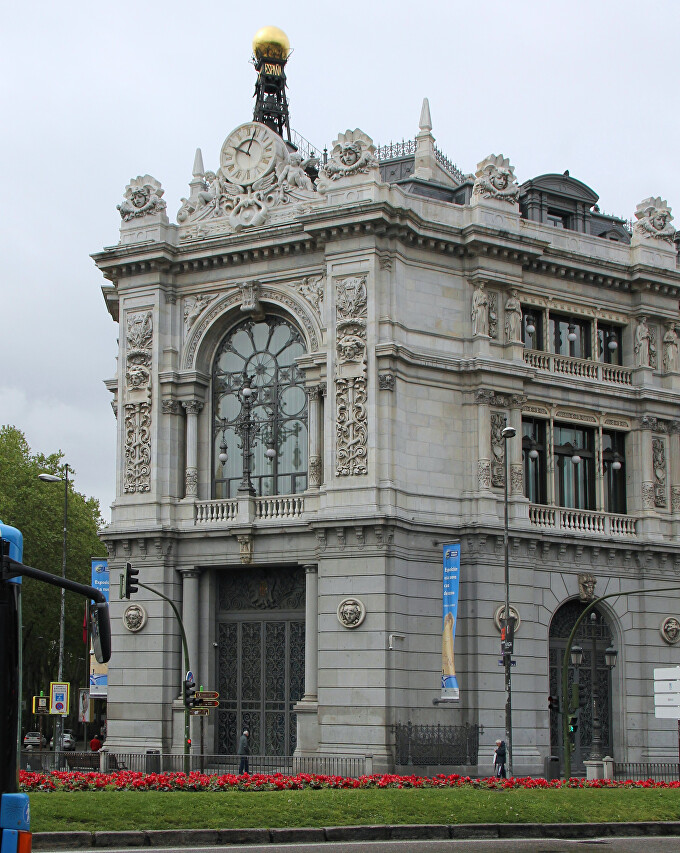
By the end of the 19th century, the bank's board was busy building a new headquarters in Madrid. For this purpose, in 1882, the Alcagnises Palace, owned by the Duke of Sesto, was purchased, located at the corner of Alcala Avenue and Paseo del Prado, which was condemned to demolition. The design of the new building was commissioned by architects Eduardo Adaro and Severiano Sainz de la Lastra, and their work won the gold medal at the National Exhibition of Fine Arts in 1884. In the same year, on July 4, in the presence of King Alfonso XII, the first stone was laid. The neoclassical building was inaugurated on 3 March 1891 by his five-year-old heir, Alfonso XIII, and accompanied by his mother, Queen Regent Maria Cristina.
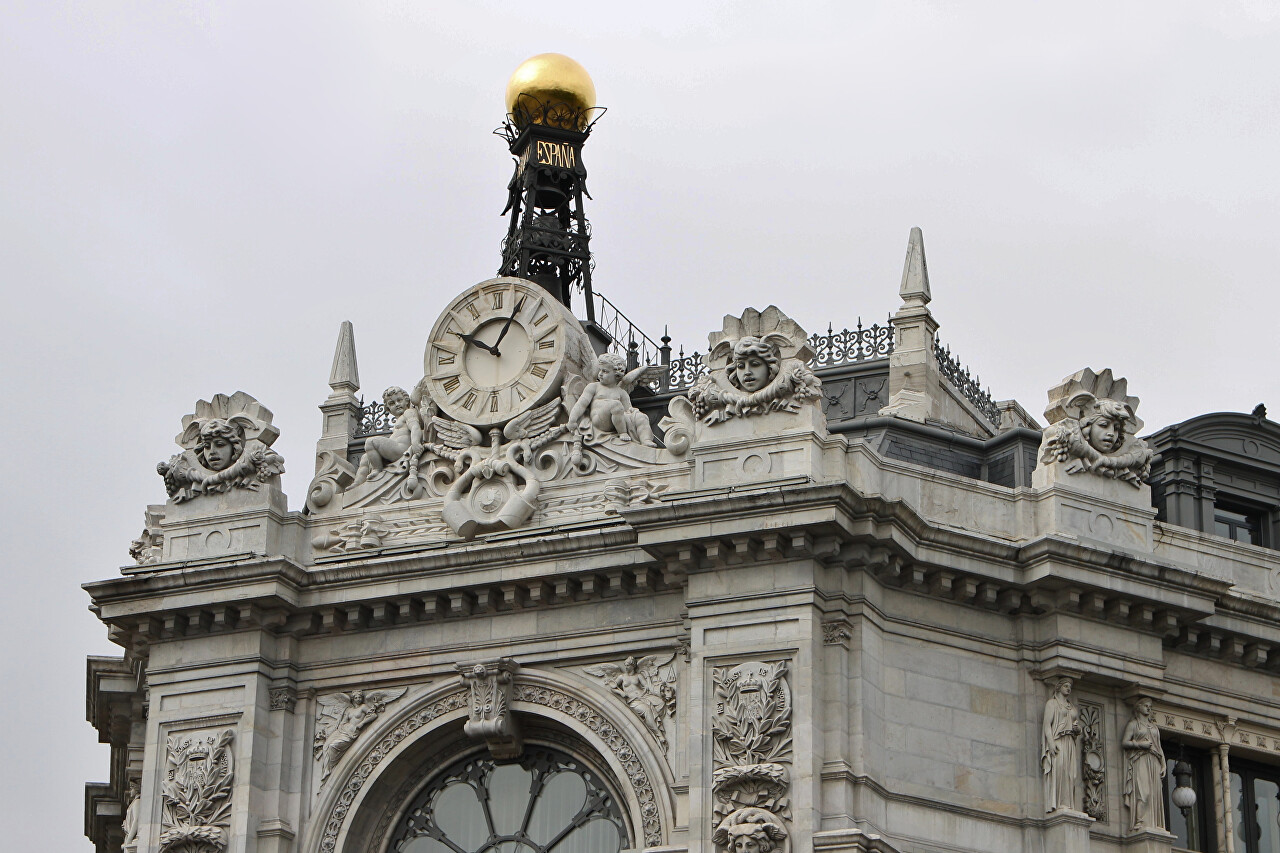
In 1927, the construction of a continuation of the facade facing Alcala Avenue was started. For this purpose, the Santamrca Palace was demolished. The project was carried out strictly along the lines and in the style of the original facade, but the interior design was completely different. The author of this part of the building is the architect Jose Yarnoz Larrosa.
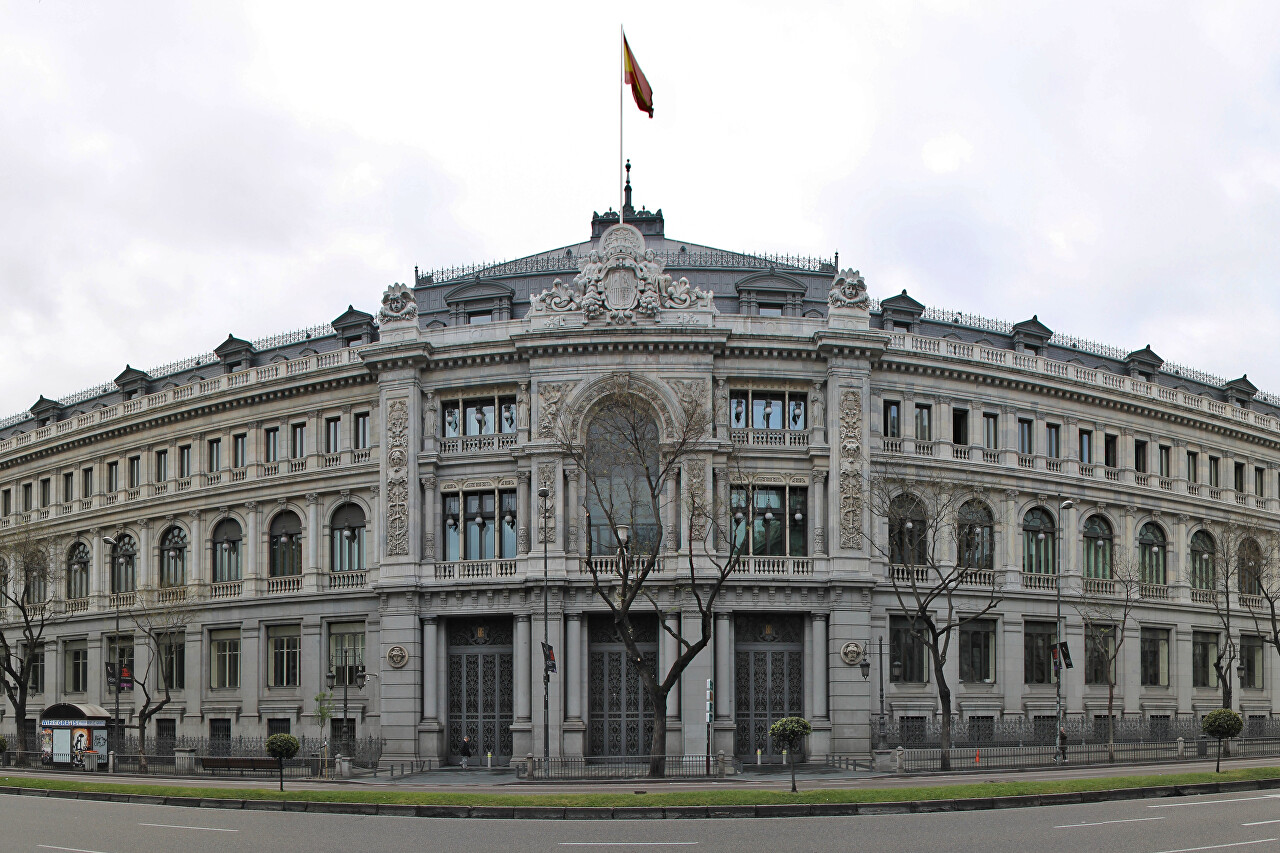
The next expansion began in 1969 under the leadership of his son, Jose Yarnoz Orcoyen.
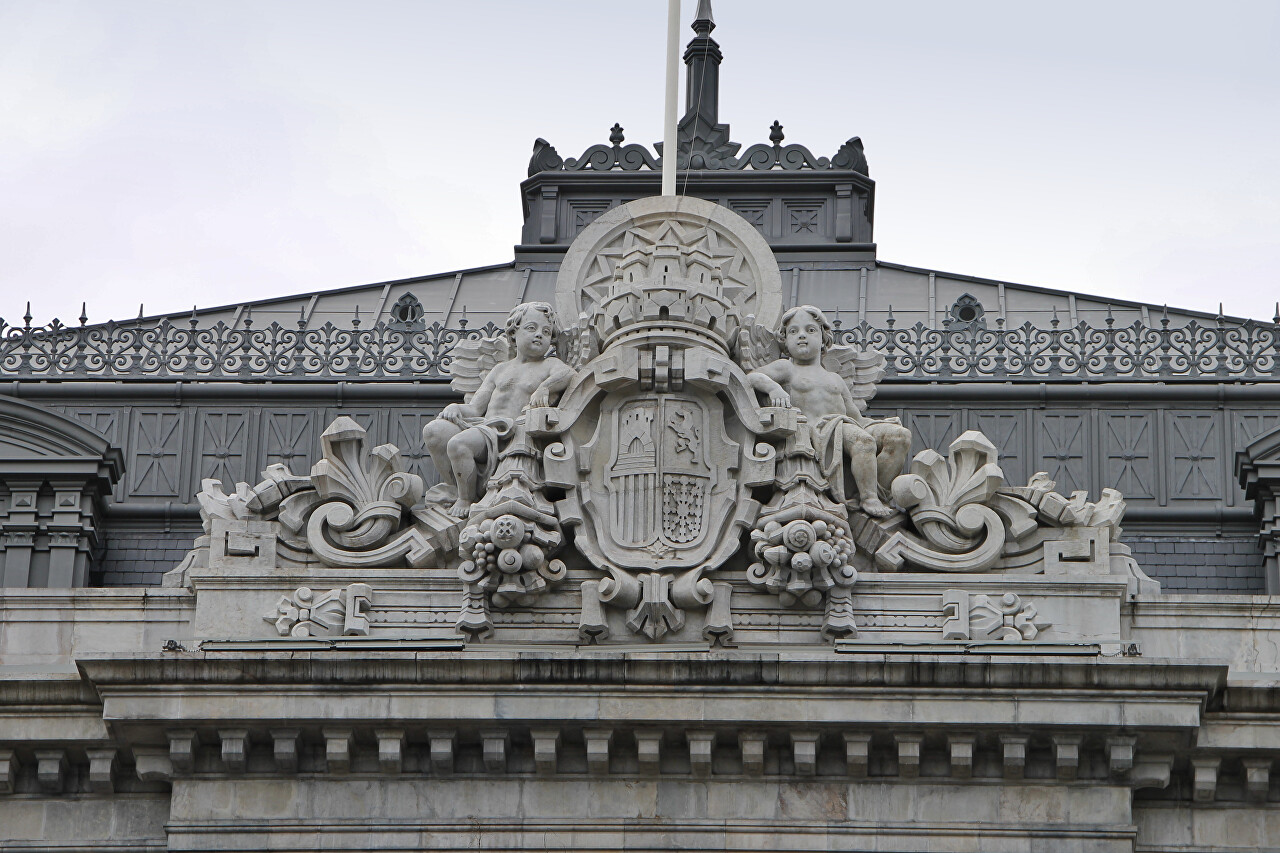
Finally, the bank building closed the ring around the block in 2003, designed by Rafael Moneo. In 1999, the building was included in the register of national cultural monuments. Now it is one of the largest architectural complexes in Madrid.
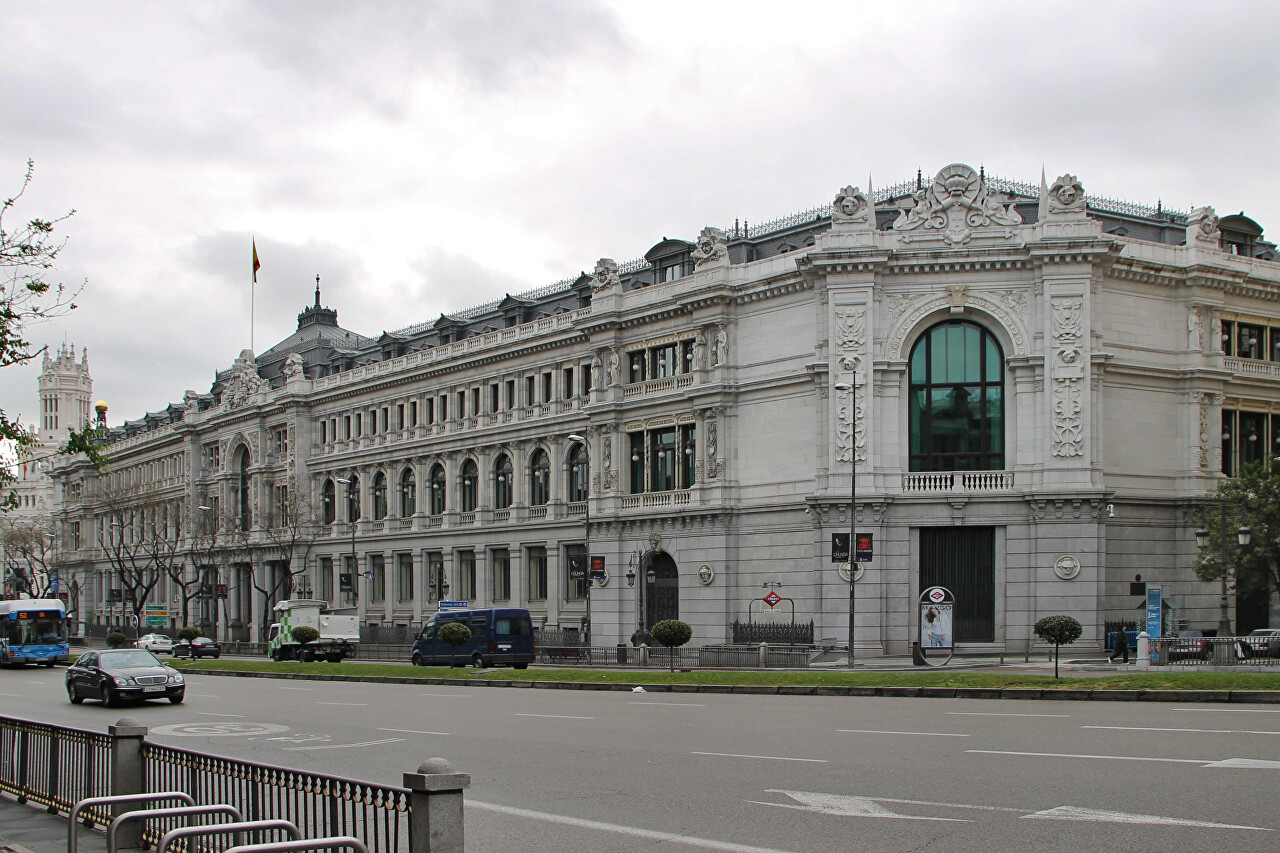
On Cibeles Square, right under the fountain, at a depth of 40 meters, there is a bunker where the National Currency Reserve of Spain is stored.
